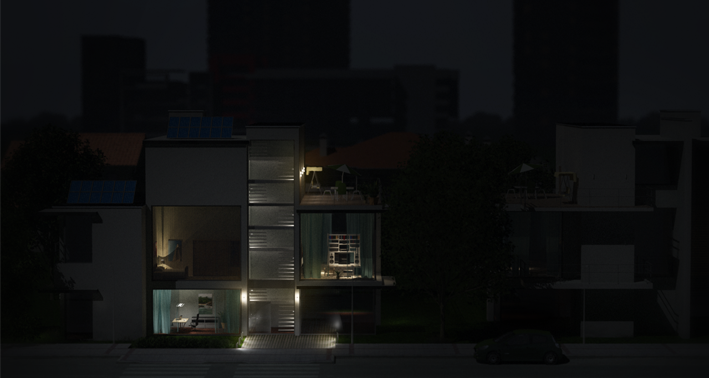Battery Backup Function: Solar Power – Even in the Event of Grid Failure

Power outage? In Germany? It hardly ever occurs here if we believe the statistics. Yet, the flooding we experienced last year has shifted public attention back to the significance of emergency power supply and battery backup systems. As anyone who has dealt with long periods of outages can tell you, it’s a major hassle to lose connection to the utility grid.
You lose power to your range, refrigerator, telephone, lights, and ultimately, the battery in your electronic devices. Even a PV system is disconnected from the utility grid immediately and automatically in the event of a power outage. However, if you own a PV system or a Smart Home system, you want to be able to continue using your solar power, even during a power outage.
What is a battery backup function?
The basic principle of the battery backup function is to provide selected loads with electricity when the public electricity supply suffers an outage. In this case, another power source (e.g., a PV system with a storage system) continues supplying electricity. Many PV system operators have already started implementing some sort of intermediate storage system for their power in order to increase their self-consumption. For this reason, it makes sense to add a battery backup function.
Since the beginning of this year, Release 3.0 for the Sunny Island has made it relatively convenient to retrofit the SMA Flexible Storage System with a battery backup function. Initially designed to increase self-consumption, the battery can now also continue to supply power to loads in the event of a grid failure.
Why do I need a battery backup function in the first place?
PV systems need to be disconnected from the utility grid during a power outage to protect the people working on the utility grid. An additional operation mode with expanded control is required for the PV inverter, battery storage system and the rest of the system to continue to operate without the grid in stand-alone mode, which is what the battery backup function provides.
How does the SMA battery backup function work?
Our new battery backup system consists of the Sunny Island battery inverter and an automatic transfer switch (battery backup distribution). It can be implemented in new or even existing systems. Certified by the professional trade association, the concept consists of three functional units, according to the requirements of the German market:
- Grid disconnection: If the Sunny Island detects a grid failure, the functional unit opens two redundant tie switches. The system is then disconnected from the utility grid.
- Grounding unit: This functional unit provides reliable grounding of the neutral conductor during grid failure. The grounding unit features two contactors.
- Phase coupling (optional): It enables combined switching of the line conductors. As a result, the other two line conductors are also supplied with voltage. This means that, in the event of grid failure, a three-phase battery backup grid becomes a single-phase distribution grid.
Once the household and PV system have been disconnected from the utility grid during a power outage, the Sunny Island battery inverter creates a grid using the power from the batteries. The switching time between grid failure and continuation of power supply to the loads takes only five seconds. A small battery-powered UPS can be used for sensitive loads (e.g., desktop computers). If the switch-on delay time for the PV inverters has elapsed, they synchronize themselves with the battery inverter grid. The PV inverters can directly supply power to loads or to the batteries (in case of excess solar power).
More information
SMA can provide detailed information on the design of the battery backup distribution board (order lists of components, assembly plan and circuitry). Alternatively, installers can order a fully wired battery backup distribution board from ENWI-etec.
You can find more detailed information to all new features of Sunny Island Release 3.0 are at our homepage.
Moreover, you will find in our “Planning Guidelines”.





Feel free to contribute!